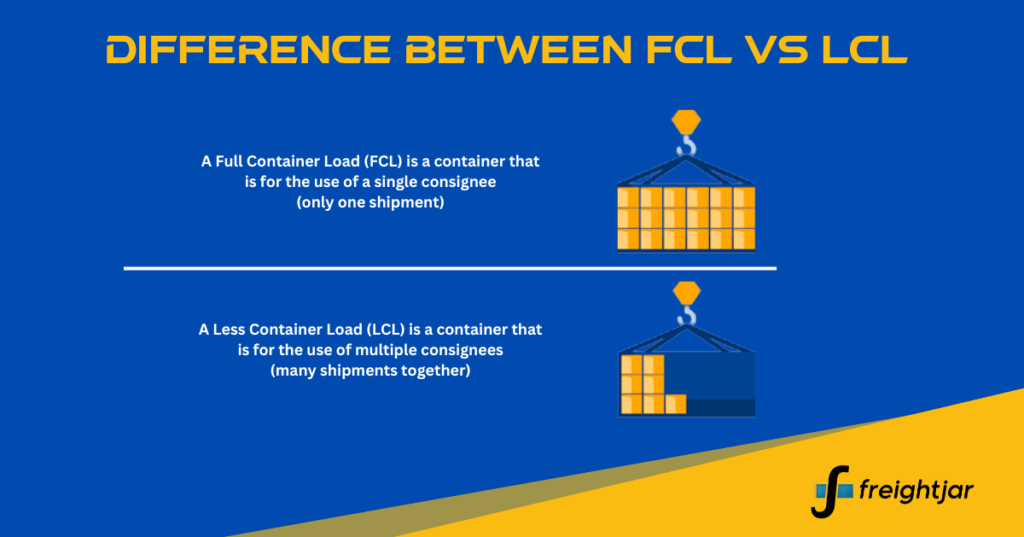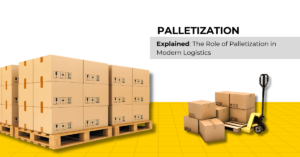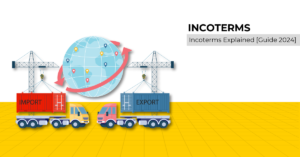
Table of Contents
FCL vs. LCL: Which Shipping Method Is Right for Your Business?
What is the difference between FCL and LCL
When in the logistics business, shipping goods internationally can often be a complex task, and choosing the right shipping method is very crucial for overall success in such businesses. Full Container Load (FCL) and Less than Container Load (LCL) are two of the most popular shipping methods and the decision to choose one is not always a straightforward one. Now the main question is fcl vs lcl which shipping method is right for your business. Both these methods have their fair share of advantages and demerits, hence it’s important to analyze them carefully and make an informed decision according to your business needs.
FCL Shipping: When to Opt for It
FCL shipping is the go-to choice when you have a large quantity of goods to ship. With FCL, you rent an entire container exclusively for your cargo, providing added security and protection during transit.
Advantages of FCL shipping
Cost-effectiveness for bulk shipments: FCL shipping is typically more cost-effective for bulk shipments. When you have a large quantity of goods to transport, filling an entire container with your cargo can often be more economical than using other shipping methods.
Reduced risk of damage and loss: FCL shipping minimizes the risk of damage or loss compared to LCL shipping. By having your cargo separate from other shippers’ loads, the chances of it being damaged or lost are significantly reduced.
Faster transit times: FCL shipping generally offers faster transit times than LCL shipping. Unlike LCL shipments, FCL shipments are not subject to delays caused by the consolidation and deconsolidation of cargo.
Limitations of FCL shipping
The requirement to fill an entire container: FCL shipping demands that you fill an entire container. This might be problematic if you have only a small number of goods to ship, as you’ll be paying for unused space.
Higher upfront costs for small businesses: For small businesses, FCL shipping can be costlier due to the upfront costs associated with renting an entire container. Without a significant volume of shipments, the expenses might outweigh the benefits.
Limited flexibility in cargo volume: FCL shipping offers less flexibility when it comes to cargo volume. You must fill an entire container, which can be challenging if you need to ship goods of varying sizes or shapes.
LCL Shipping: When to Opt for It
LCL shipping is a more suitable option for small businesses or those shipping smaller quantities of goods. With LCL, your cargo is consolidated with other shippers’ cargo into a single container, allowing you to share the container’s cost.
Advantages of LCL shipping
Cost-effectiveness for smaller shipments: LCL shipping is cost-effective for shipping small quantities of goods. Paying only for the space your cargo occupies in the container is often more affordable than renting the entire container.
Flexibility in cargo volume: LCL shipping offers greater flexibility in terms of cargo volume compared to FCL shipping. You can ship goods of different sizes or shapes without needing to fill an entire container.
Shared container space: LCL shipping enables you to share container space with other shippers, reducing shipping costs. You only pay for the space your cargo occupies, making it a budget-friendly option.
Limitations of LCL shipping
Longer transit times: LCL shipping tends to take longer than FCL shipping due to the consolidation and deconsolidation processes at each port. This additional handling can add several days to your overall shipping time.
Increased risk of damage and loss: Since LCL shipping involves mixing your cargo with other shippers’ goods, there is a slightly higher risk of damage or loss during transit.
Potential delays in customs clearance: LCL shipping is more susceptible to delays caused by customs clearance for multiple shipments. Each shipment must go through customs clearance separately, which can add several days to your shipping time.
Factors to Consider When Choosing between FCL and LCL
When deciding between FCL and LCL shipping methods, there are several factors to consider:
Volume and size of shipments: If you’ve got a lot of goods to send, FCL shipping is usually the way to go. It lets you maximize the space in the container and brings down the cost per item. But if your shipments are smaller, LCL shipping can be a smarter choice. You only pay for the space you actually need, which helps keep costs in check.
Cost considerations: FCL shipping often comes with higher upfront expenses because you’re renting the whole container. However, if you can fill it up or have regular shipments, the cost per item can be lower. On the other hand, LCL shipping is a better fit for businesses with smaller budgets or those that ship goods occasionally. It helps you manage costs more effectively.
Frequency of shipments: If you have shipments on a regular basis, FCL shipping can be more cost-effective in the long run. It streamlines the process and keeps things efficient. But if your shipments are sporadic or irregular, LCL shipping offers more flexibility. You don’t have to worry about renting an entire container for each shipment. It’s a convenient option for businesses with less frequent shipping needs.
Transit time requirements: If you have time-sensitive shipments and need your goods to arrive quickly, FCL shipping is the better choice. It offers faster transit times since it doesn’t go through the consolidation and deconsolidation processes that LCL shipping does. On the other hand, LCL shipping, while cost-effective, may involve longer transit times due to these additional handling procedures.
Nature of the cargo: The nature of your cargo is another crucial aspect to consider. If you’re shipping fragile, perishable, or hazardous items, FCL shipping provides better protection. Your goods won’t be mixed with cargo from other shippers, reducing the risk of damage or loss. On the flip side, LCL shipping involves mixing cargo from different shippers, which increases the chances of mishandling or accidents. So, if you have precious cargo, FCL might be the way to go.
Customs and documentation requirements: Lastly, keep in mind that FCL and LCL shipping have different customs and documentation procedures. Take a good look at any specific requirements or regulations that apply to your goods. You want to make sure you can meet all the necessary criteria with your chosen shipping method. It’s all about making sure your goods sail smoothly through customs without any unexpected surprises.
Conclusion
When choosing between FCL and LCL shipping, carefully assess your specific needs and requirements. Consider the volume and size of your shipments, cost considerations, frequency of shipments, transit time requirements, nature of the cargo, and customs/documentation requirements. If you’re unsure, consult with shipping experts or logistics providers who can provide valuable insights and guidance.
Remember to obtain quotes from multiple shipping companies, inquire about special discounts or promotions, and fully understand the terms and conditions of the shipping contract. By following these tips and making an informed decision, you can select the appropriate shipping method for your business, ensuring your goods reach their destination on time and within budget.








1 thought on “FCL vs. LCL: Which Shipping Method Is Right for Your Business?”
Greetings! Very helpful advice in this particular post!
It’s the little changes which will make the biggest changes.
Thanks a lot for sharing!